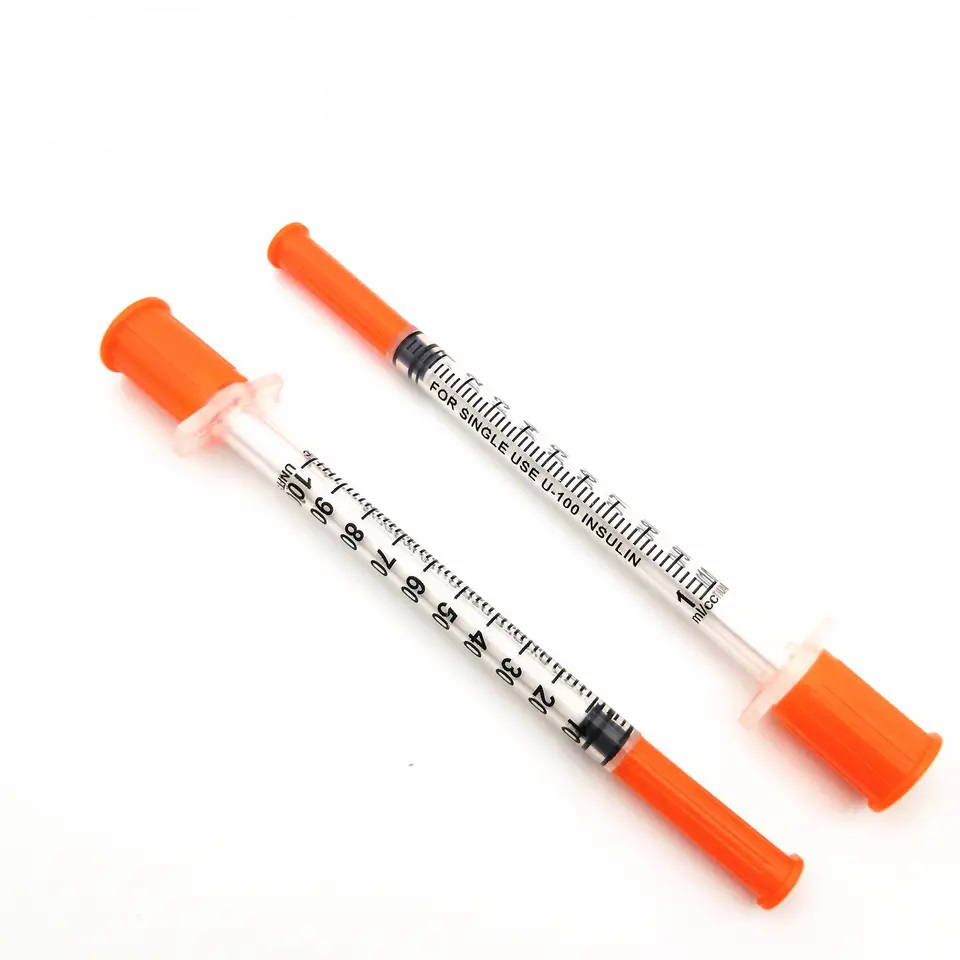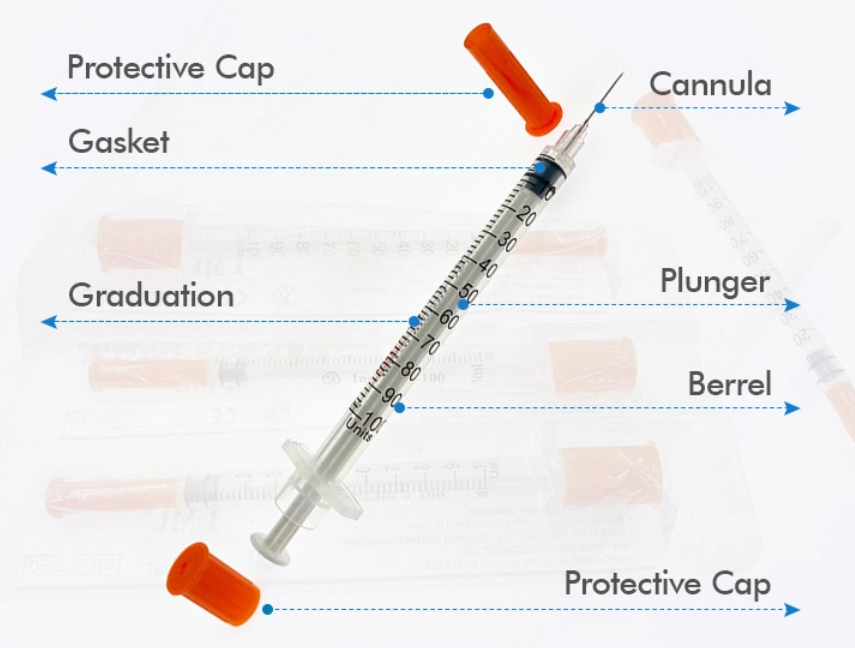An insulin syringe is a medical device used to administer insulin to individuals with diabetes. Insulin is a hormone that regulates blood sugar levels, and for many diabetics, maintaining appropriate insulin levels is essential to managing their condition. Insulin syringes are specifically designed for this purpose, ensuring precise and safe delivery of insulin into the subcutaneous tissue.
Common Sizes of Insulin Syringes
Insulin syringes come in various sizes to accommodate different insulin dosages and patient needs. The three most common sizes are:
1. 0.3 mL Insulin Syringes: Suitable for doses less than 30 units of insulin.
2. 0.5 mL Insulin Syringes: Ideal for doses between 30 and 50 units.
3. 1.0 mL Insulin Syringes: Used for doses between 50 and 100 units.
These sizes ensure that patients can select a syringe that closely matches their required insulin dose, minimizing the risk of dosage errors.
| Insulin needle length | Insulin needle gauge | Insulin barrel size |
| 3/16 inch (5mm) | 28 | 0.3ml |
| 5/16 inch (8mm) | 29,30 | 0.5ml |
| 1/2 inch (12.7mm) | 31 | 1.0ml |
Parts of an Insulin Syringe
An insulin syringe typically consists of the following parts:
1. Needle: A short, thin needle that minimizes discomfort during injection.
2. Barrel: The part of the syringe that holds the insulin. It is marked with a scale to measure the insulin dose accurately.
3. Plunger: A movable part that pushes insulin out of the barrel through the needle when depressed.
4. Needle Cap: Protects the needle from contamination and prevents accidental injury.
5. Flange: Located at the end of the barrel, the flange provides a grip for holding the syringe.
Usage of Insulin Syringes
Using an insulin syringe involves several steps to ensure accurate and safe administration:
1. Preparing the Syringe: Remove the needle cap, pull back the plunger to draw air into the syringe, and inject the air into the insulin vial. This balances the pressure inside the vial.
2. Drawing Insulin: Insert the needle into the vial, invert the vial, and pull back the plunger to draw the prescribed insulin dose.
3. Removing Air Bubbles: Gently tap the syringe to dislodge any air bubbles, pushing them back into the vial if necessary.
4. Injecting Insulin: Clean the injection site with alcohol, pinch the skin, and insert the needle at a 45- to 90-degree angle. Depress the plunger to inject the insulin and withdraw the needle.
5. Disposal: Dispose of the used syringe in a designated sharps container to prevent injury and contamination.
How to Choose the Right Insulin Syringe Size
Choosing the right syringe size depends on the required insulin dose. Patients should consult their healthcare provider to determine the correct syringe size based on their daily insulin requirements. Factors to consider include:
- Dosage Accuracy: A smaller syringe provides more precise measurements for low doses.
- Ease of Use: Larger syringes may be easier to handle for individuals with limited dexterity.
- Injection Frequency: Patients who require frequent injections may prefer syringes with finer needles to reduce discomfort.
Different Types of Insulin Syringes
While standard insulin syringes are the most common, there are other types available to suit different needs:
1. Short-Needle Syringes: Designed for individuals with less body fat, reducing the risk of injecting into muscle.
2. Prefilled Syringes: Preloaded with insulin, these syringes offer convenience and reduce preparation time.
3. Safety Syringes: Equipped with mechanisms to cover the needle after use, reducing the risk of needle-stick injuries.
Shanghai Teamstand Corporation: A Leading Medical Device Supplier
Shanghai Teamstand Corporation is a renowned medical device supplier and manufacturer specializing in high-quality medical products, including insulin syringes. With years of experience and a commitment to innovation, Shanghai Teamstand Corporation provides reliable and safe medical devices to healthcare professionals and patients worldwide.
Their product range includes a variety of insulin syringes designed to meet diverse patient needs, ensuring precision and comfort in insulin administration. Shanghai Teamstand Corporation's dedication to quality and customer satisfaction has established them as a trusted name in the medical device industry.
Conclusion
Insulin syringes play a critical role in diabetes management, offering a reliable method for insulin administration. Understanding the different sizes, parts, and types of insulin syringes can help patients and healthcare providers make informed choices. Shanghai Teamstand Corporation continues to be a leader in the field, providing top-notch medical devices that enhance patient care and improve health outcomes.
Post time: Jun-03-2024









